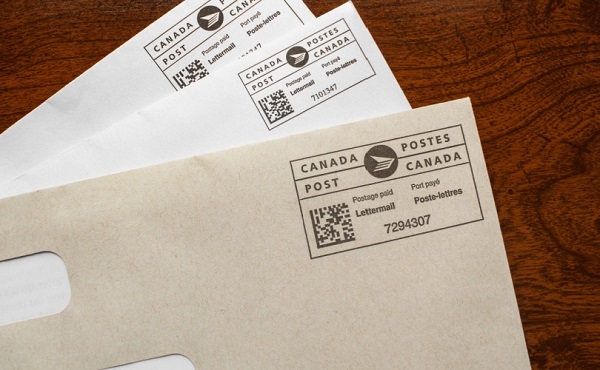Business
Federal government could save $10.7 billion by eliminating eight spending initiatives

From the Fraser Institute
By Jake Fuss and Grady Munro
During its tenure, the Trudeau government rejected any semblance of spending restraint and increased spending (and borrowing) at every turn. However, due to the rising cost of deficits and debt, coupled with pressures to increase spending in neglected areas such as defence, the next federal government—whoever that may be—may finally be forced to find savings and reduce spending.
But where to look?
The government should immediately review all spending on the basis of efficiency, value for money, and the appropriate role of government—similar to the spending review initiated by the federal Chrétien government during the 1990s. Here are some line items ripe for the cutting board.
| Spending Area | Projected Spending in 2024/25 |
|---|---|
| Regional Development Agencies | $1.5 billion |
| Government Supports for Journalism | $1.7 billion |
| Incentives for Zero-Emission Vehicles | $0.6 billion |
| 2 Billion Trees | $0.3 billion |
| Canada Infrastructure Bank | $3.5 billion |
| Strategic Innovation Fund | $2.4 billion |
| Global Innovation Clusters | $0.2 billion |
| Green Municipal Fund | $0.5 billion |
| Total Potential Savings | $10.7 billion |
Regional Development Agencies: The federal government operates seven Regional Development Agencies (RDAs), which deliver financial assistance (a.k.a. corporate welfare) to businesses. Despite spending an estimated $1.5 billion in federal taxpayer money in 2024/25, the RDAs do not provide any widespread economic benefits to Canadians. Instead, they simply redistribute those dollars to private firms and pick winners and losers in the free market. When reporting on the results, the government offers vague platitudes such as “businesses are growing” and “communities are developing economically.”
Government Money for Journalism: In 2024/25 the federal government spent an estimated $1.7 billion to support Canadian journalism including the operating costs (e.g. wages) of newspapers and broadcast outlets such as the CBC. Despite these efforts, and the considerable price tag, hundreds of news organizations have closed since 2020 and layoffs have persisted—largely due to the disruptive effects of the Internet. Simply put, the traditional media sector is in decline, and the government’s costly attempts to reverse this trend have been ineffective.
Federal Support for Electric Vehicle Purchases: As part of its push to reduce emissions, the federal government will spend an estimated $587.6 million to subsidize electric vehicle (EV) purchases in 2024/25. This spending is inefficient and wasteful. EV incentives are expensive—costing a minimum of $177 per tonne of greenhouse gas (GHG) emissions, whereas the federal carbon tax in 2024 was much cheaper at $80 per tonne of GHG emissions.
The 2 Billion Trees (2BT) Program: Ottawa has earmarked $3.2 billion for the program from 2021 to 2031, with expenses in 2024-25 alone estimated at $340 million. While laudable in theory, the program has been poorly executed. In its first two years, the federal government spent roughly 15.0 per cent of the total budget to plant merely 2.3 per cent of the two billion trees. In fact, the 2BT program has used trees planted under a different program to artificially boost its numbers.
Canada Infrastructure Bank (CIB): Established in 2017, the CIB is a federal Crown corporation tasked with investing and attracting investment in Canadian infrastructure projects. Over its more than seven-year lifespan, the CIB has approved approximately $13.2 billion in investments across 76 projects (as of July 2024). In 2024/25, federal CIB funding will equal $3.5 billion. Though multiple problems plague the CIB, chief among them is its inefficiency in advancing projects. As of July 2024, only two CIB-funded projects had been completed. This lack of progress was a chief concern in a previous House of Commons committee report that made the sole recommendation to abolish the CIB.
Strategic Innovation Fund (SIF): With federal grants and contributions, the SIF funds projects based on their purported potential to deliver innovation and economic benefits for Canadians. While Canada certainly suffers from a lack of innovation, this spending (to the tune of $2.4 billion in 2024/25) simply shifts jobs and investment dollars away from other firms and industries—with no net benefit for the overall economy. Similarly, increased government spending on innovation may simply crowd out private-sector investment, leading to no net increase in innovation investment.
Global Innovation Clusters (GIC): The federal government launched the GIC program, like the SIF, to address the lack of innovation in Canada. The government expects to disperse $202.3 million through the GIC in 2024/25 alone, targeting the five “clusters” of business activity the government chose in 2018. But again, because the clusters represent specific industries and technologies (e.g. artificial intelligence, marine technologies, manufacturing), the federal government is incentivizing firms to spend time and resources modifying their businesses to secure grant rather than focusing on the development of new/improved goods and services.
Green Municipal Fund (GMF): The GMF spends federal tax dollars on municipal projects that purportedly accelerate the transition to net-zero greenhouse gas (GHG) emissions. In 2024/25, the federal government will contribute $530 million to the fund. While the fund maintains emissions-reduction targets for projects, several projects approved for funding will not reduce GHG emissions in any measurable way—for example, “climate-friendly” home tours and funding for climate advocacy groups in Ottawa. In other words, the GMF is spending taxpayer dollars on projects that make no apparent progress towards the GMF’s stated goal.
In total, these eight spending initiatives add up to approximately $10.7 billion in potential savings for the 2024-25 fiscal year alone. And remember, these are just the low-hanging fruit. The next federal government can find further savings through a more comprehensive review of all spending.
Business
Carney’s European pivot could quietly reshape Canada’s sovereignty

This article supplied by Troy Media.
Canadians must consider how closer EU ties could erode national control and economic sovereignty
As Prime Minister Mark Carney attempts to deepen Canada’s relationship with the European Union and other supranational institutions, Canadians should be asking a hard question: how much of our national independence are we prepared to give away? If you want a glimpse of what happens when a country loses control over its currency, trade and democratic accountability, you need only look to Bulgaria.
On June 8, 2025, thousands of Bulgarians took to the streets in front of the country’s National Bank. Their message was clear: they want to keep the lev and stop the forced adoption of the euro, scheduled for Jan. 1, 2026.
Bulgaria, a southeastern European country and EU member since 2007, is preparing to join the eurozone—a bloc of 20 countries that share the euro as a common currency. The move would bind Bulgaria to the economic decisions of the European Central Bank, replacing its national currency with one managed from Brussels and Frankfurt.
The protest movement is a vivid example of the tensions that arise when national identity collides with centralized policy-making. It was organized by Vazrazdane, a nationalist, eurosceptic political party that has gained support by opposing what it sees as the erosion of Bulgarian sovereignty through European integration. Similar demonstrations took place in cities across the country.
At the heart of the unrest is a call for democratic accountability. Vazrazdane leader Konstantin Kostadinov appealed directly to EU leaders, arguing that Bulgarians should not be forced into the eurozone without a public vote. He noted that in Italy, referendums on the euro were allowed with support from less than one per cent of citizens, while in Bulgaria, more than 10 per cent calling for a referendum have been ignored.
Protesters warned that abandoning the lev without a public vote would amount to a betrayal of democracy. “If there is no lev, there is no Bulgaria,” some chanted. For them, the lev is not just a currency: it is a symbol of national independence.
Their fears are not unfounded. Across the eurozone, several countries have experienced higher prices and reduced purchasing power after adopting the euro. The loss of domestic control over monetary policy has led to economic decisions being dictated from afar. Inflation, declining living standards and external dependency are real concerns.
Canada is not Bulgaria. But it is not immune to the same dynamics. Through trade agreements, regulatory convergence and global commitments, Canada has already surrendered meaningful control over its economy and borders. Canadians rarely debate these trade-offs publicly, and almost never vote on them directly.
Carney, a former central banker with deep ties to global finance, has made clear his intention to align more closely with the European Union on economic and security matters. While partnership is not inherently wrong, it must come with strong democratic oversight. Canadians should not allow fundamental shifts in sovereignty to be handed off quietly to international bodies or technocratic elites.
What’s happening in Bulgaria is not just about the euro—it’s about a people demanding the right to chart their own course. Canadians should take note. Sovereignty is not lost in one dramatic act. It erodes incrementally: through treaties we don’t read, agreements we don’t question, and decisions made without our consent.
If democracy and national control still matter to Canadians, they would do well to pay attention.
Isidoros Karderinis was born in Athens, Greece. He is a journalist, foreign press correspondent, economist, novelist and poet. He is accredited by the Greek Ministry of Foreign Affairs as a foreign press correspondent and has built a distinguished career in journalism and literature.
Troy Media empowers Canadian community news outlets by providing independent, insightful analysis and commentary. Our mission is to support local media in helping Canadians stay informed and engaged by delivering reliable content that strengthens community connections and deepens understanding across the country.
Business
EU investigates major pornographic site over failure to protect children

From LifeSiteNews
Pornhub has taken down 91% of its images and videos and a huge portion of the last 9% will be gone by June 30 because it never verified the age or consent of those in the videos.
Despite an aggressive PR operation to persuade lawmakers that they have reformed, Pornhub is having a very bad year.
On May 29, it was reported that the European Commission is investigating the pornography giant and three other sites for failing to verify the ages of users.
The investigation, which comes after a letter sent to the companies last June asking what measures they have taken to protect minors, is being carried out under the Digital Services Act. The DSA came into effect in November 2022 and directs platforms to ensure “appropriate and proportionate measures to ensure a high level of privacy, safety, and security of minors, on their service” and implement “targeted measures to protect the rights of the child, including age verification and parental control tools, tools aimed at helping minors signal abuse or obtain support, as appropriate.”
According to France24: “The commission, the EU’s tech regulator, accused the platforms of not having ‘appropriate; age verification tools to prevent children from being exposed to pornography. An AFP correspondent only had to click a button on Tuesday stating they were older than 18 without any further checks to gain access to each of the four platforms.”
Indeed, Pornhub’s alleged safety mechanisms are a sick joke, and Pornhub executives have often revealed the real reason behind their opposition to safeguards: It limits their traffic.
Meanwhile, Pornhub — and other sites owned by parent company Aylo — are blocking their content in France in response to a new age verification law that came into effect on June 7. Solomon Friedman, Aylo’s point man in the Pornhub propaganda war, stated that the French law was “potentially privacy infringing” and “dangerous,” earning a scathing rebuke from France’s deputy minister for digital technology Clara Chappaz.
“We’re not stigmatizing adults who want to consume this content, but we mustn’t do so at the expense of protecting our children,” she said, adding later, “Lying when one does not want to comply with the law and holding others hostage is unacceptable. If Aylo would rather leave France than apply our law, they are free to do so.” According to the French media regulator Arcom, 2.3 million French minors visit pornographic sites every month.
Incidentally, anti-Pornhub activist Laila Mickelwait reported another major breakthrough on June 7. “P*rnhub is deleting much of what’s left of the of the site by June 30,” she wrote on X. “Together we have collectively forced this sex trafficking and rape crime scene to take down 91% of the entire site, totaling 50+ million videos and images. Now a significant portion of the remaining 9% will be GONE this month in what will be the second biggest takedown of P*rnhub content since December 2020.”
“The reason for the mass deletion is that they never verified the age or consent of the individuals depicted in the images and videos, and therefore the site is still awash with real sexual crime,” she added. “Since the fight began in 2020, 91% of P*rnhub has been taken down — over 50 million images and videos. Now a huge portion of the last 9% will be gone by June 30 because P*rnhub never verified the age or consent of those in the videos and the site is a crime scene.”
Mickelwait has long called for the shutdown of Pornhub and the prosecution of those involved in its operation. This second mass deletion of content, as welcome as it is, reeks of a desperate attempt to eliminate the evidence of Pornhub’s crimes.
-

 Crime1 day ago
Crime1 day agoHow Chinese State-Linked Networks Replaced the Medellín Model with Global Logistics and Political Protection
-

 Aristotle Foundation2 days ago
Aristotle Foundation2 days agoWe need an immigration policy that will serve all Canadians
-

 Addictions2 days ago
Addictions2 days agoNew RCMP program steering opioid addicted towards treatment and recovery
-

 Business1 day ago
Business1 day agoNatural gas pipeline ownership spreads across 36 First Nations in B.C.
-

 Courageous Discourse1 day ago
Courageous Discourse1 day agoHealthcare Blockbuster – RFK Jr removes all 17 members of CDC Vaccine Advisory Panel!
-

 Business14 hours ago
Business14 hours agoEU investigates major pornographic site over failure to protect children
-

 Health1 day ago
Health1 day agoRFK Jr. purges CDC vaccine panel, citing decades of ‘skewed science’
-

 Censorship Industrial Complex1 day ago
Censorship Industrial Complex1 day agoConservatives slam Liberal bill to allow police to search through Canadians’ mail





